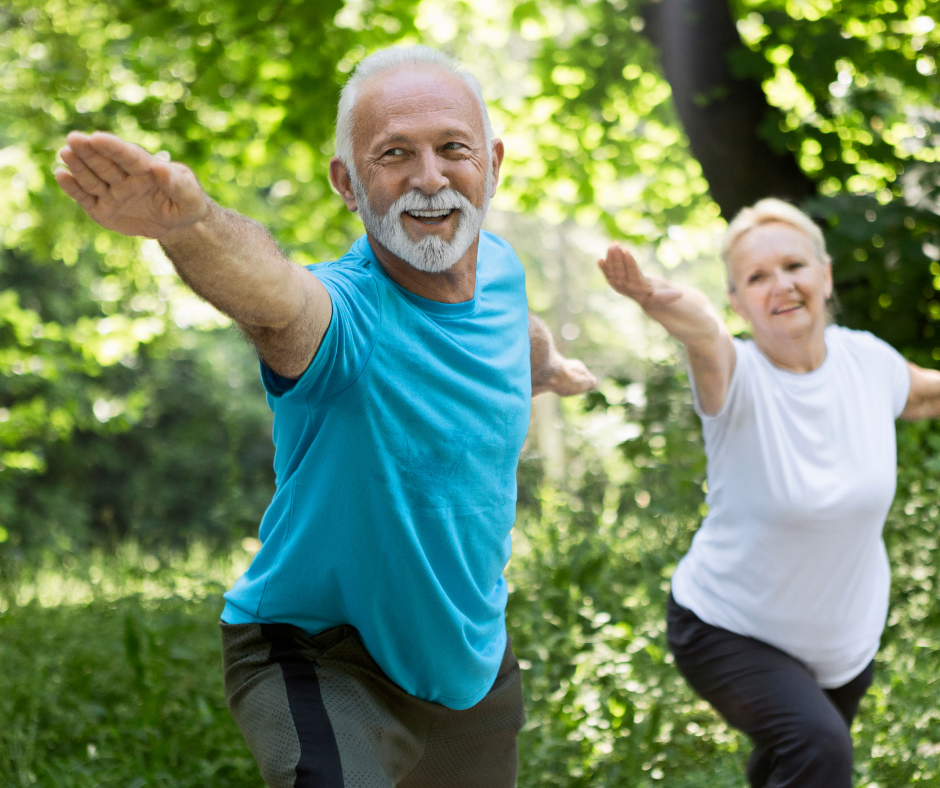
To honor September as Healthy Aging Month, it seems fitting to talk about the importance of physical activity for older adults. The benefits of regular, moderate-intensity physical activity, such as brisk walking, on our mental and physical health are very clear; however, as we age, there are more and more barriers to doing this on a regular basis. These barriers are related to three main areas: capability, opportunity, and motivation.
We may have heard ourselves say, “I can’t exercise because of”
- Capability-related barriers = chronic health conditions, physical or cognitive limitations, and pain.
- Opportunity-related barriers = social isolation, lack of access to spaces to be active, equipment, or guidance.
- Motivation-related barriers = feeling that it is too late to start being active; fear of falling, pain, or injury; lack of knowledge about how to be active; lack of enjoyment; or lack of support from others.
These barriers can make it harder to be physically active as we get older; however, they do not have to stop us completely. Adopting some simple solutions can make physical activity easier and more fun!
Now let’s move to I CAN exercise:
| Barrier* | Potential solution* |
| Too tired/not enough energy | Work with a physical therapist or personal trainer who specializes in exercises for those with joint pain or arthritis. Try low-impact activities such as water aerobics, yoga, tai chi, or walking. |
| Fear of falling | Schedule physical activity during periods of the day when you feel most energetic. Moving more can give us an energy boost and can make us feel less fatigued. |
| Joint pain | Sign up for a strength class with supervision that works on balance. Begin with exercises that provide support for balance that use a chair, railing, or wall. |
| Lack of motivation, enjoyment, or social support | Lack of knowledge or skills regarding muscle-strengthening activities |
| Lack of motivation, enjoyment or social support | Find an in-person or virtual buddy in your community. Walking or doing another activity that you enjoy with others is a great way to connect and feel less isolated. |
| Bad weather or poor air quality | Find indoor options such as walking at a mall, airport, grocery store, big-box store, or gym. |
| Lack of expensive equipment | Seek guidance from a physical therapist or trainer about using cans, water bottles, or your own body weight for resistance exercises. |
| No close gym facility | Find ways to be physically active by doing household chores, gardening, dancing to your favorite music, or playing with your grandchildren. Consider walking or bicycling to do errands instead of driving. Join an online program, such as Silver Sneakers which has online fitness classes for seniors https://tools.silversneakers.com/ |
*Adapted from Table 3. Examples of Barriers and Potential Solutions for Older Adults, p. 30-31 of U.S. Department of Health and Human Services. Physical Activity Guidelines for Americans Midcourse Report: Implementation Strategies for Older Adults. Full citation below.
Reference: U.S. Department of Health and Human Services. Physical Activity Guidelines for Americans Midcourse Report: Implementation Strategies for Older Adults. Washington, DC: U.S. Department of Health and Human Services; 2023- https://health.gov/sites/default/files/2023-08/PAG_MidcourseReport_508c_08-10.pdf
Don’t miss another great blog: Subscribe Now
